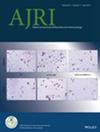Vaginal Microbiome Dominated by Lactobacillus Positively Impacts Clinical Pregnancy in Patients With Frozen Embryo Transfers
Abstract
Problem
There is evidence that the bacterial microbiome of the female reproductive tract affects fertility outcomes, but the findings are conflicting, and studies are lacking in racially and ethnically diverse populations.
Method of Study
In this prospective cohort study, vaginal swabs were collected from 87 female patients at time of frozen embryo transfer (FET) after oral estradiol preparation of the endometrium. The primary outcome was an ultrasound demonstrating a viable intrauterine pregnancy. 16s rRNA gene sequencing was performed on the swabs to compare the vaginal microbiome between those who achieved a viable pregnancy compared to those who did not.
Results
A total of 87 patients participated in the study, of whom 25% (22/87) reported a race other than White and 17% (15/87) identified as Hispanic. There were 55 patients who achieved clinical pregnancy. Patients who achieved pregnancy had a significantly higher prevalence of Lactobacillus-dominant profiles: 67% (37/55) compared with 41% (13/32) of the nonpregnant group (p = 0.024), with a relative risk of pregnancy of 1.52 [1.05, 2.20]. Nonpregnant patients exhibited more Enterobacteriacae and other opportunistic pathogens. Hispanic patients in the study cohort demonstrated decreased clinical pregnancy rates (p = 0.021) and lower Lactobacillus dominance (p = 0.01) compared to non-Hispanic White women.
Conclusions
This study suggests that a vaginal microbiome predominated by Lactobacillus is associated with successful embryo implantation and early establishment of pregnancy after FET. Decreased Lactobacillus dominance may contribute to reproductive outcome disparities among Hispanic women. These findings support the consideration of the female reproductive microbiome in the evaluation and treatment of infertility.

 求助内容:
求助内容: 应助结果提醒方式:
应助结果提醒方式:


